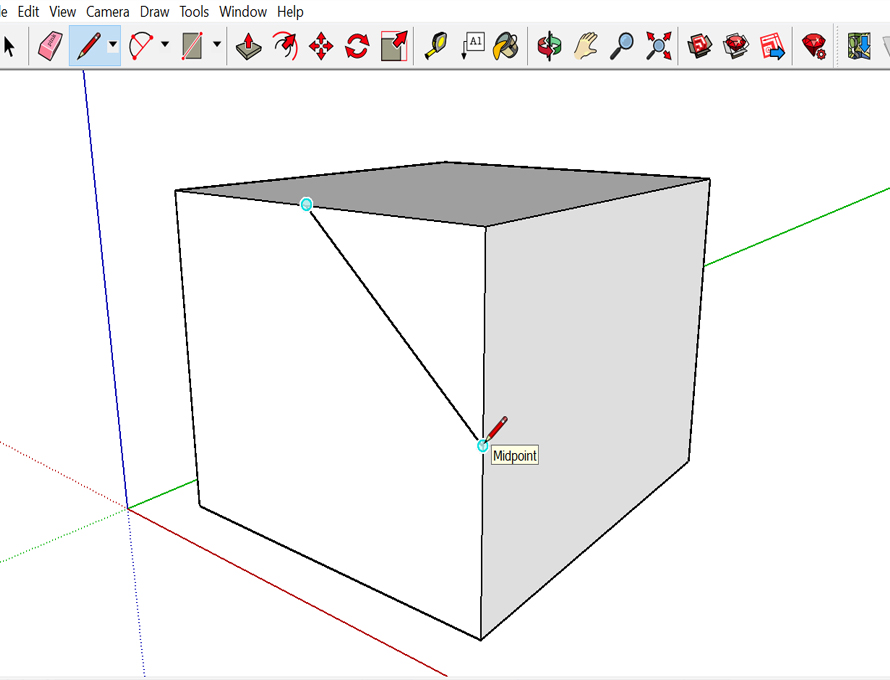SketchUp users always find some easy ways to work in 3D modeling and drawing in SketchUp is the most important thing that needs to be done through some easy concepts.
Drawing a model in 3D platform is bit different from drawing an image in 2D; in SketchUp users have to draw on 3D platform with tools but this 3D drawing is not familiar to everyone so here is a little introduction about all the drawing basics and concepts.
This article is a kind of description where people can learn about a few ways to create edges and faces which are basic things of any SketchUp model.
www.help.sketchup.com/en/sketchup

~~~~~~~~~~~~~~~~~~~~~~~~~~~~
Published By
Rajib Dey
www.sketchup4architect.com
~~~~~~~~~~~~~~~~~~~~~~~~~~~~
Drawing a model in 3D platform is bit different from drawing an image in 2D; in SketchUp users have to draw on 3D platform with tools but this 3D drawing is not familiar to everyone so here is a little introduction about all the drawing basics and concepts.
This article is a kind of description where people can learn about a few ways to create edges and faces which are basic things of any SketchUp model.
Table of Contents:
- Drawing a line: The Line tool is used to draw edges from the structural foundation of all models. At first the Line tool is selected and then the cursor changes into Pencil; next the click on an area to draw a line. Then the cursor is clicked to set the line’s end point which can be also the starting point of another line. Now Esc key is pressed after finished drawing lines and after setting the end point, users should press Ctrl + Z (Microsoft Windows) or Command + Z (macOS) to undo the line. If anyone wants to make the line a precise length he/she needs to type a value and press Enter (Microsoft Windows) or Return (macOS); this process can be repeated until drawing a next line.
- Creating a face: When several lines are joined into a shape it will form a face which may be plain but very important one; every face is the other half of the duo which enables SketchUp model ever made to exist. Shape tools like Rectangle, Circle and Polygon create faces.
- Dividing faces: When a line or a curve is drawn on an existing face, the face become split. It is an important thing as after splitting a face, users can use the Push/Pull tool to push o pull one part of the face while the other part stays put.
- Opening 3D shapes by removing edges and faces: Users can erase an edge or face to make an opening in a shape. To see how erasing an edge effects the model, users need to select the Eraser tool at first in the toolbar or need to press the E key. Clicking an edge erases it and any face that touched the edger; but context-clicking a face and choosing Erase will delete only the face.
- Healing deleted faces: If a face is deleted accidentally there are two ways to bring it back: 1) if any other changes isn’t made by user and wants to keep the previous one, he needs to select Edit > Undo from the menu bar or press the keyboard shortcut for Undo. 2) Users can redraw the line that caused the faces to hide and SketchUp will re-create the faces.
- Finding and locking an inference: SketchUp has an inference engine to help in working with 3D space and this engine will help to find geometric relationship between lines.
- Inference types: SketchUp has several types of inferences like point, linear and shape; SketchUp often mixes them together to form a complex inference. Components and dynamic components have their own inference types.
- Locking inferences with a keyboard: It will help to draw along the direction according to the user and it can maintain one drawing direction while users reference geometry from another part of the model.
- Ensuring edges are aligned to axes: It is helpful to change the cursor to the axes colors or if it is need to check the alignment of existing geometry, the edges will be changed to the axes colors.
www.help.sketchup.com/en/sketchup

~~~~~~~~~~~~~~~~~~~~~~~~~~~~
Published By
Rajib Dey
www.sketchup4architect.com
~~~~~~~~~~~~~~~~~~~~~~~~~~~~
No comments:
Post a Comment